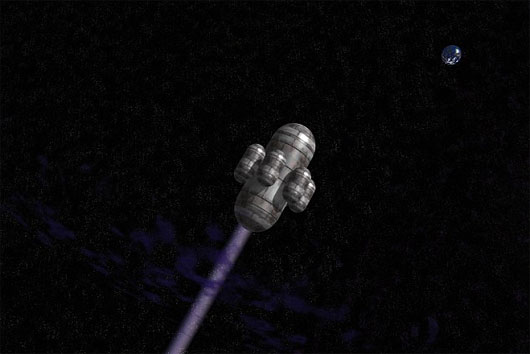Sowing human DNA on other planets
Among the many theories about the formation of life on Earth, there is a theory that in the form of microorganisms, life is brought to Earth through meteorites or comets from other planets in Solar system, or even from other planets.
This view is still a hypothesis, but can the opposite happen? Can we send life from Earth to other planets and "seed" a new world? This is exactly what some scientists have discussed, and they think this is possible.
In a speech at the science festival called "The Future is Here" by Smithsonian magazine in Washington DC last May, NASA engineer Adam Seltzner talked about the future of space exploration.
Besides emphasizing the importance of this work, Seltzner also talked about a lesser known method, which is to bring the human genome to distant planets .

Scientists suggest that the most effective way for humans to conquer space is to send their genome to other planets.(Source: DailyMail)
According to Meghan Neal's report on Motherboard, this method is based on the results of a number of other scientists, talking about introducing human genomes in the form of microorganisms to other planets; The genome will then be developed in an unknown way, possibly thanks to a machine.
"Maybe we will conquer planets not by astronauts in space suits, but by microorganisms , " Seltzner said.
This idea comes from two biologists from Harvard University, Dr. Gary Ruvkun and Dr. George Church, presented in a publication of Harvard Medical University. In addition, in a study published in April 2012, scientists from Kyoto Sangyo University in Japan discussed this method and argued that perhaps this "cloning" process was happened - although it was just accidental.
On the other hand, the way to develop this genome into a complete human body is the subject of debate. The set of genes can be left to grow naturally, or through a machine.
Of course these suggestions can only be made in the very far future, but scientists believe that one day humans can create multicellular bodies - and even multicellular bodies. complicated as human.
Although this "clone" method sounds fictional, in fact this idea is much more feasible.
Several experiments have been carried out by NASA's Aerospace Agency to find out if microorganisms can survive the trip from Earth to Mars.
This past May, this has been proven possible. Microorganisms need to be better protected to be able to survive a longer journey, to planets outside the solar system, for example.
The results of the experiment, along with the research work, opened up a new future for the discovery and conquest of the human universe.
- China intensifies sowing seeds in space
- Complete the rice sowing process in line
- Unknown mystery about planets outside the solar system
- Discover more 18 large planets
- Why are planets spherical, and meteorites?
- Discover self-seeding plants in Brazil
- Method of weighing extraterrestrial planets
- 8 planets are not true to haunt the scientific world
- 60 billion planets can support life
- Two more decades will meet
- Sowing 5-year-old sows, discovering rare and precious
- Discover more than 700 planets outside the solar system
 Van Allen's belt and evidence that the Apollo 11 mission to the Moon was myth
Van Allen's belt and evidence that the Apollo 11 mission to the Moon was myth The levels of civilization in the universe (Kardashev scale)
The levels of civilization in the universe (Kardashev scale) Today Mars, the sun and the Earth are aligned
Today Mars, the sun and the Earth are aligned The Amazon owner announced a secret plan to build a space base for thousands of people
The Amazon owner announced a secret plan to build a space base for thousands of people